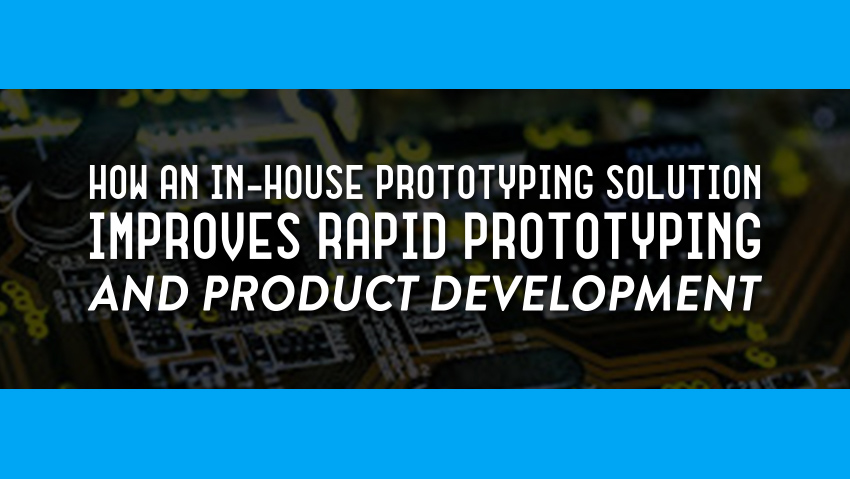
In-House Rapid PCB Prototyping Improves Product Development
History has proven that as technology evolves and becomes more refined, it also becomes more compact, powerful and accessible.
Over time, computers have become more advanced, portable, and most importantly, accessible. Development costs for the ENIAC Computer broke the bank at a staggering $400,000.
The parallel between increased accessibility and technological refinement is especially evident in rapid PCB prototyping; where affordable in-house options are now available that allow companies to cut costs and regain control of their rapid prototyping and product development success.
So, What Exactly is Rapid PCB Prototyping?
Good question. Perhaps the most well-known method of rapid prototyping is 3D printing. You’ve heard all about 3D printing and how great it is, right? You’ve likely seen photos of – or created yourself – an assortment of items printed in 3D. While 3D printing has advantages for a number of applications, there is another form of rapid prototyping that offers specific advantages, especially in the world of electronics. This method of rapid prototyping is known as subtractive manufacturing.
Subtractive Manufacturing 101
Subtractive manufacturing is a method by which material is removed, leaving behind the desired piece. Subtractive manufacturing is ideal in producing electronics, such as printed circuit boards (PCBs), which require an exact process by which conductive material (typically copper) is removed, leaving behind the conductive traces that compose the circuit.
Check out our previous post on subtractive manufacturing for more information on this method.
Rapid PCB Prototyping Within Reach
As previously mentioned, the evolution of technology often makes devices and tools attainable for individual companies which may have previously been too expensive, time-intensive or complicated for in-house use.
Like 3D printers, prototyping solutions that utilize subtractive manufacturing – such as LPKF’s 2.5D ProtoMat milling machines – are becoming more and more affordable. As the cost of rapid prototyping equipment decreases, companies are increasingly purchasing their own equipment and moving product development in-house.
Benefits of Owning Your Own Equipment, Advantages of an In-house Process
There are numerous advantages to owning your own rapid prototyping equipment and utilizing an in-house system. Below are a few key benefits to consider:
Move at Your Own Speed – The Only Barrier is You
With your own prototyping solution, you control the schedule. With an in-house system, you can prototype as fast as you and your team are able to use the milling machine. This is a tremendous advantage in product development, as it means you can prototype boards much more quickly, analyze them faster and ultimately get the product to market sooner.
A Competitive Edge
When you have your own machine, you can prototype frequently. The more you prototype, the more you can improve your design. In the end, this increased innovation is sure to help your company produce a better quality product.
Regain Control
Control freaks, rejoice! In-house prototyping is for you. Perhaps the most significant pain point associated with external services is the lack of control in the development process. Moving to internal prototyping puts the control back into your hands. It also means you have eyes on the process and can identify and address errors quickly. You can also take risks and test new ideas that may have been shelved when cost and time were major considerations.
Freedom and Flexibility in Design
Outsourcing and dealing with external services can significantly stretch the production timeline and stifle creativity. Through in-house rapid prototyping, companies can test, revise and improve designs at a furious pace, ultimately bringing their product to market before the competition.
Save Money
Now we have your attention, don’t we? Inexpensive outsourcing is hard to come by. External vendors pass numerous costs on to you and your company each time prototyping occurs. Investing in an in-house solution will pay dividends in a relatively short period of time.
Safety and Security
You’re likely interested in an in-house solution for many of the reasons outlined above – the ability to push, innovate and improve your product. While we’re all careful to select external vendors that we trust, anytime a design leaves your company, its security is no longer guaranteed. An in-house process allows you to protect your intellectual property and secure your designs.
The Takeaway
While some hesitation is natural when considering a process change, the advantages of an in-house program outlined above are compelling. Many companies who have made the switch are enjoying the benefits of reduced costs, condensed production schedules, and a robust and creative development process.


